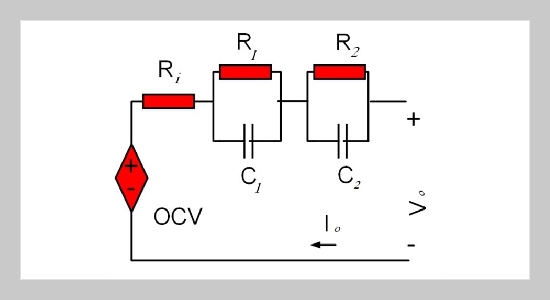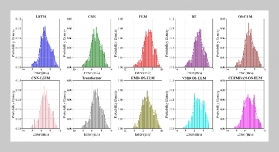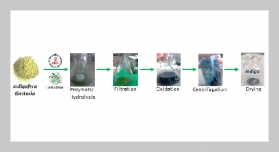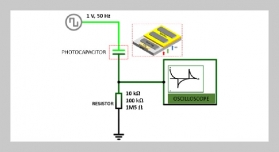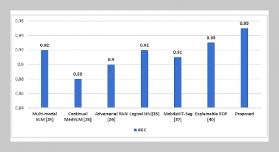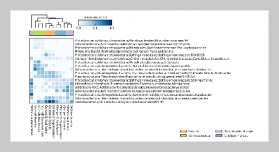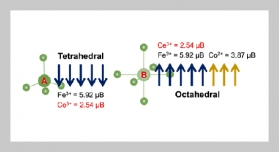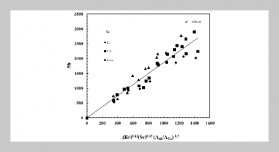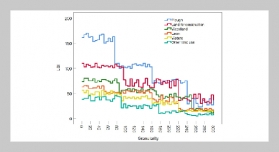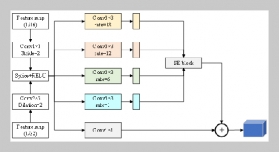- [1] Z. Cui, L. Wang, Q. Li, and K. Wang, (2022) “A com prehensive review on the state of charge estimation for lithium-ion battery based on neural network" International Journal of Energy Research 46: 5423–5440. DOI: https: //doi.org/10.1002/er.7545.
- [2] P. Shrivastava, P. A. Naidu, S. Sharma, B. K. Panigrahi, and A. Garg, (2023) “Review on technological advancement of lithium-ion battery states estimation methods for electric vehicle applications" Journal of Energy Storage 64: 107159. DOI: https: //doi.org/10.1016/j.est.2023.107159.
- [3] L. Zhou, X. Lai, B. Li, Y. Yao, M. Yuan, J. Weng, and Y. Zheng, (2023) “State estimation models of lithium-ion batteries for battery management system: status, challenges, and future trends" Batteries 9: 131. DOI: https: //doi.org/10.3390/batteries9020131.
- [4] O. Rezaei and M. Faghih, (2023) “Design of a Robust Unknown Input Observer for the State of Charge Estimation for Lithium-Ion Batteries" Advances in Engineering and Intelligence Systems 2: 28–36. DOI: https: //doi.org/10.22034/aeis.2023.397366.1099.
- [5] K. S. Ng, C.-S. Moo, Y.-P. Chen, and Y.-C. Hsieh, (2009) “Enhanced coulomb counting method for estimating state-of-charge and state-of-health of lithium-ion batteries" Applied energy 86: 1506–1511. DOI: https: //doi.org/10.1016/j.apenergy.2008.11.021.
- [6] J. Xie, J. Ma, and K. Bai, (2018) “Enhanced coulomb counting method for state-of-charge estimation of lithium ion batteries based on peukert’s law and coulombic efficiency" Journal of Power Electronics 18: 910–922. DOI: http: //dx.doi.org/10.6113/JPE.2018.18.3.910.
- [7] F. Mohammadi, (2022) “Lithium-ion battery State of-Charge estimation based on an improved Coulomb Counting algorithm and uncertainty evaluation" Journal of energy storage 48: 104061. DOI: https: //doi.org/10.1016/j.est.2022.104061.
- [8] N. Christian and L. Ling, (2023) “A Dual Extended Kalman Filter for the State of Charge Estimation of Lithium ion Batteries" Advances in Engineering and Intelligence Systems 2: 1–10. DOI: https: //doi.org/10.22034/aeis.2023.412040.1123.
- [9] S. Lee, J. Kim, J. Lee, and B. H. Cho, (2008) “State of-charge and capacity estimation of lithium-ion battery using a new open-circuit voltage versus state-of-charge" Journal of power sources 185: 1367–1373. DOI: https: //doi.org/10.1016/j.jpowsour.2008.08.103.
- [10] R. Xiong, Q. Yu, and C. Lin, (2017) “A novel method to obtain the open circuit voltage for the state of charge of lithium ion batteries in electric vehicles by using H infinity filter" Applied energy 207: 346–353. DOI: https: //doi.org/10.1016/j.apenergy.2017.05.136.
- [11] F. Zheng, Y. Xing, J. Jiang, B. Sun, J. Kim, and M. Pecht, (2016) “Influence of different open circuit voltage tests on state of charge online estimation for lithium-ion batteries" Applied energy 183: 513–525. DOI: https: //doi.org/10.1016/j.apenergy.2016.09.010.
- [12] J. Xie, X. Wei, X. Bo, P. Zhang, P. Chen, W. Hao, and M. Yuan, (2023) “State of charge estimation of lithium ion battery based on extended Kalman filter algorithm" Frontiers in Energy Research 11: 1180881. DOI: https: //doi.org/10.3389/fenrg.2023.1180881.
- [13] L. Duan, X. Zhang, Z. Jiang, Q. Gong, Y. Wang, and X. Ao, (2023) “State of charge estimation of lithium-ion batteries based on second-order adaptive extended Kalman filter with correspondence analysis" Energy 280: 128159. DOI: https: //doi.org/10.1016/j.energy.2023.128159.
- [14] C. Wang, S. Wang, J. Zhou, J. Qiao, X. Yang, and Y. Xie, (2023) “A novel back propagation neural network dual extended Kalman filter method for state-of-charge and state-of-health co-estimation of lithium-ion batteries based on limited memory least square algorithm" Journal of Energy Storage 59: 106563. DOI: https: //doi.org/10.1016/j.est.2022.106563.
- [15] M. Li, C. Li, Q. Zhang, W. Liao, and Z. Rao, (2023) “State of charge estimation of Li-ion batteries based on deep learning methods and particle-swarm-optimized Kalman filter" Journal of Energy Storage 64: 107191. DOI: https: //doi.org/10.1016/j.est.2023.107191.
- [16] J. Yun, Y. Choi, J. Lee, S. Choi, and C. Shin, (2023) “State-of-charge estimation method for lithium-ion batteries using extended kalman filter with adaptive battery parameters" IEEE Access 11: 90901–90915. DOI: https://doi.org/10.1109/ACCESS.2023.3305950.
- [17] S. Zhang, C. Zhang, S. Jiang, and X. Zhang, (2022) “A comparative study of different adaptive ex tended/unscented Kalman filters for lithium-ion battery state-of-charge estimation" Energy 246: 123423. DOI: https: //doi.org/10.1016/j.energy.2022.123423.
- [18] C. Jiang, S. Wang, B. Wu, C. Fernandez, X. Xiong, and J. Coffie-Ken, (2021) “A state-of-charge estimation method of the power lithium-ion battery in complex conditions based on adaptive square root extended Kalman filter" Energy 219: 119603. DOI: https: //doi.org/10.1016/j.energy.2020.119603.
- [19] S. Yang, S. Zhou, Y. Hua, X. Zhou, X. Liu, Y. Pan, H. Ling, and B. Wu, (2021) “A parameter adaptive method for state of charge estimation of lithium-ion batteries with an improved extended Kalman filter" Scientific reports 11: 5805. DOI: https: //doi.org/10.1038/s41598-021-84729-1.
- [20] Y. Xu, M. Hu, A. Zhou, Y. Li, S. Li, C. Fu, and C. Gong, (2020) “State of charge estimation for lithium-ion batteries based on adaptive dual Kalman filter" Applied Mathematical Modelling 77: 1255–1272. DOI: https: //doi.org/10.1016/j.apm.2019.09.011.
- [21] X. Yang, S. Wang, W. Xu, J. Qiao, C. Yu, P. Takyi Aninakwa, and S. Jin, (2022) “A novel fuzzy adaptive cubature Kalman filtering method for the state of charge and state of energy co-estimation of lithium-ion batteries" Electrochimica Acta 415: 140241. DOI: https: //doi.org/10.1016/j.electacta.2022.140241.
- [22] N. Peng, S. Zhang, X. Guo, and X. Zhang, (2021) “On line parameters identification and state of charge estimation for lithium-ion batteries using improved adaptive dual unscented Kalman filter" International Journal of Energy Research 45: 975–990. DOI: https: //doi.org/10.1002/er.6088.
- [23] S. Zhang, X. Guo, and X. Zhang, (2020) “An improved adaptive unscented kalman filtering for state of charge on line estimation of lithium-ion battery" Journal of energy storage 32: 101980. DOI: https: //doi.org/10.1016/j.est.2020.101980.
- [24] D. Wang, Y. Yang, and T. Gu, (2023) “A hierarchical adaptive extended Kalman filter algorithm for lithium-ion battery state of charge estimation" Journal of Energy Storage 62: 106831. DOI: https: //doi.org/10.1016/j.est.2023.106831.
- [25] C. Jiang, S. Wang, B. Wu, C. Fernandez, X. Xiong, and J. Coffie-Ken, (2021) “A state-of-charge estimation method of the power lithium-ion battery in complex conditions based on adaptive square root extended Kalman filter" Energy 219: 119603. DOI: https: //doi.org/10.1016/j.energy.2020.119603.
- [26] H. Zhao, C. Liao, C. Zhang, L. Wang, and L. Wang, (2024) “State-of-charge estimation of lithium-ion battery: Joint long short-term memory network and adaptive ex tended Kalman filter online estimation algorithm" Journal of Power Sources 604: 234451. DOI: https://doi. org/10.1016/j.jpowsour.2024.234451.
- [27] D. N. T. How, M. A. Hannan, M. S. H. Lipu, and P. J. Ker, (2019) “State of charge estimation for lithium ion batteries using model-based and data-driven methods: Areview" Ieee Access 7: 136116–136136. DOI: https: //doi.org/10.1109/ACCESS.2019.2942213.
- [28] Z.Zou,J.Xu,C.Mi,B.Cao,andZ.Chen,(2014)“Evaluation of model based state of charge estimation methods for lithium-ion batteries" Energies 7: 5065–5082. DOI: https: //doi.org/10.3390/en7085065.
- [29] P. Shrivastava, T. K. Soon, M. Y. I. B. Idris, and S. Mekhilef, (2019) “Overview of model-based online state-of-charge estimation using Kalman filter family for lithium-ion batteries" Renewable and Sustainable Energy Reviews 113: 109233. DOI: https: //doi.org/10.1016/j.rser.2019.06.040.
- [30] H. Obeid, R. Petrone, H. Chaoui, and H. Gualous, (2022) “Higher order sliding-mode observers for state-of charge and state-of-health estimation of lithium-ion batteries" IEEE Transactions on Vehicular Technology 72: 4482–4492. DOI: https: //doi.org/10.1109/TVT.2022.3226686.
- [31] M. Chen, F. Han, L. Shi, Y. Feng, C. Xue, W. Gao, and J. Xu, (2022) “Sliding mode observer for state-of-charge estimation using hysteresis-based Li-ion battery model" Energies 15: 2658. DOI: https: //doi.org/10.3390/en15072658.
- [32] A. Fereydooni, E. Vafa, M. R. Pishvaie, and B. G. Choobar, (2023) “Robust adaptive sliding mode observer for core temperature and state of charge monitoring of Li-ion battery: A simulation study" Journal of Energy Storage 70: 107960. DOI: https: //doi.org/10.1016/j.est.2023.107960.
- [33] M. Zhou, K. Wei, X. Wu, L. Weng, H. Su, D. Wang, Y. Zhang, and J. Li, (2023) “Fractional-order sliding mode observers for the estimation of state-of-charge and state-of-health of lithium batteries" Batteries 9: 213. DOI: https: //doi.org/10.3390/batteries9040213.
- [34] A. Shah, K. Shah, C. Shah, and M. Shah, (2022) “State of charge, remaining useful life and knee point estimation based on artificial intelligence and Machine learning in lithium-ion EV batteries: A comprehensive review" Renewable Energy Focus 42: 146–164. DOI: https: //doi.org/10.1016/j.ref.2022.06.001.
- [35] Z. Cui, L. Wang, Q. Li, and K. Wang, (2022) “A com prehensive review on the state of charge estimation for lithium-ion battery based on neural network" Interna tional Journal of Energy Research 46: 5423–5440. DOI: https: //doi.org/10.1002/er.7545.
- [36] J. Li, M. Ye, W. Meng, X. Xu, and S. Jiao, (2020) “A novel state of charge approach of lithium ion battery using least squares support vector machine" IEEE Access 8: 195398–195410. DOI: https: //doi.org/10.1109/ACCESS.2020.3033451.
- [37] S. Sepasi, L. R. Roose, and M. M. Matsuura, (2015) “Extended Kalman filter with a fuzzy method for accurate battery pack state of charge estimation" Energies 8: 5217 5233. DOI: https: //doi.org/10.3390/en8065217.
